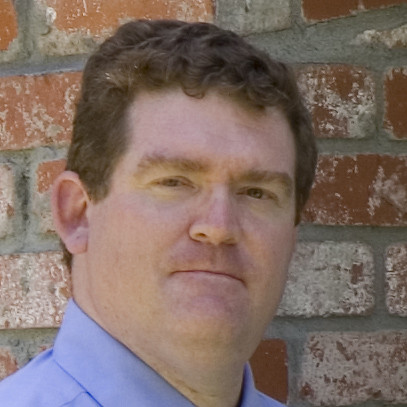My current digital photography workflow
Here's my digital photography workflow when shooting raw with my Canon EOS 30D. I've developed this over the past few weeks, so it's very much subject to change.
I use a Dell Latitude D620 (2 GHz Core Duo, 2 GB RAM) running Windows XP Pro. I use my Dell 2407 display for my image work, as my laptop's display lacks brightness and saturation.
I start processing a photo session by using xplorer2 to copy my images from my card to a folder like
I then start browsing the pics with Canon's Digital Photo Professional (DPP). I use its eyedropper tool to fix poor white balance, and I also correct underexposure. I then export all pictures to full-size high-quality jpegs in the directory ..\processed.
I next browse the jpegs full-screen with Faststone Image Viewer, looking for issues. For pics with exposure problems, I go back to the raw image and open it in LightZone. Since it doesn't see DPP's adjustments, I use the ZoneMapper for detailed exposure corrections, and apply the white balance filter as necessary. I'll often apply the ToneMapper filter with default settings on outdoor/sky/cloud shots; it lends nice contrast.
If a picture has mixed exposure issues -- tungsten light in one area, fluorescent in another, too dark in yet another -- LightZone allows masks to be defined for each application of a filter, making fixes for such images relatively easy.
Next, if the image needs filtering for noise, I export a 16-bit tiff and process it with Noise Ninja. This tool is simply miraculous; it fixes bad noise out of the box. I've found that just a little bit of practice with the advanced controls allows removal of more subtle noise. This tool is truly amazing.
If a jpeg created by DPP only needs noise reduction, I'll skip the tiff creation and process the jpeg in NN, adding -nn to the filename.
I'll next open the tiff in Paint Shop Pro XI. I'll do any necessary cropping or resizing. Finally, I'll export it to jpeg.
The last step is usually to upload to either Flickr or Smugmug, creating a set for the session.
Yes, it's a rather long workflow. I don't do every step for every picture -- I only apply a tool when necessary. The flow needs some optimization; it'll come with time.
Do I regret the additional work brought by shooting raw? No. I appreciate the additional quality and detail of raw. I also appreciate the flexibility in processing the additional data allows.
The first thing that will change in my workflow is I'll replace Paint Shop Pro with Photoshop CS2. I was frustrated to find that many of Paint Shop Pro Photo XI's tools do not work on 16-bit images. That's preposterous! I need to throw away data to manipulate data? No thanks.
I've left out lots of detail. I encourage comments and questions.
I use a Dell Latitude D620 (2 GHz Core Duo, 2 GB RAM) running Windows XP Pro. I use my Dell 2407 display for my image work, as my laptop's display lacks brightness and saturation.
I start processing a photo session by using xplorer2 to copy my images from my card to a folder like
pics\raw\<camera>\<yyyy-mm-dd <subject>>\raw.I then start browsing the pics with Canon's Digital Photo Professional (DPP). I use its eyedropper tool to fix poor white balance, and I also correct underexposure. I then export all pictures to full-size high-quality jpegs in the directory ..\processed.
I next browse the jpegs full-screen with Faststone Image Viewer, looking for issues. For pics with exposure problems, I go back to the raw image and open it in LightZone. Since it doesn't see DPP's adjustments, I use the ZoneMapper for detailed exposure corrections, and apply the white balance filter as necessary. I'll often apply the ToneMapper filter with default settings on outdoor/sky/cloud shots; it lends nice contrast.
If a picture has mixed exposure issues -- tungsten light in one area, fluorescent in another, too dark in yet another -- LightZone allows masks to be defined for each application of a filter, making fixes for such images relatively easy.
Next, if the image needs filtering for noise, I export a 16-bit tiff and process it with Noise Ninja. This tool is simply miraculous; it fixes bad noise out of the box. I've found that just a little bit of practice with the advanced controls allows removal of more subtle noise. This tool is truly amazing.
If a jpeg created by DPP only needs noise reduction, I'll skip the tiff creation and process the jpeg in NN, adding -nn to the filename.
I'll next open the tiff in Paint Shop Pro XI. I'll do any necessary cropping or resizing. Finally, I'll export it to jpeg.
The last step is usually to upload to either Flickr or Smugmug, creating a set for the session.
Yes, it's a rather long workflow. I don't do every step for every picture -- I only apply a tool when necessary. The flow needs some optimization; it'll come with time.
Do I regret the additional work brought by shooting raw? No. I appreciate the additional quality and detail of raw. I also appreciate the flexibility in processing the additional data allows.
The first thing that will change in my workflow is I'll replace Paint Shop Pro with Photoshop CS2. I was frustrated to find that many of Paint Shop Pro Photo XI's tools do not work on 16-bit images. That's preposterous! I need to throw away data to manipulate data? No thanks.
I've left out lots of detail. I encourage comments and questions.

